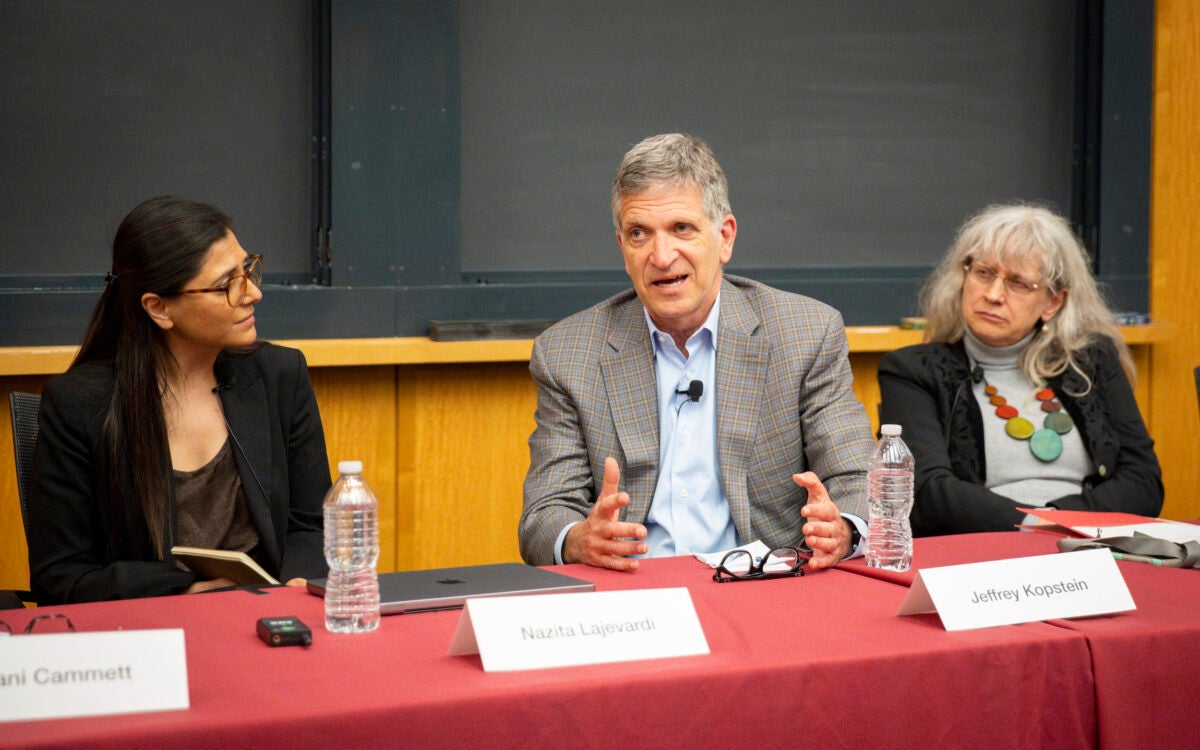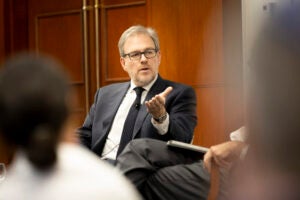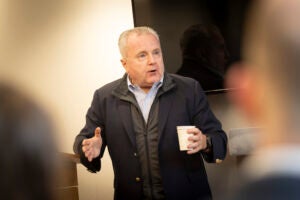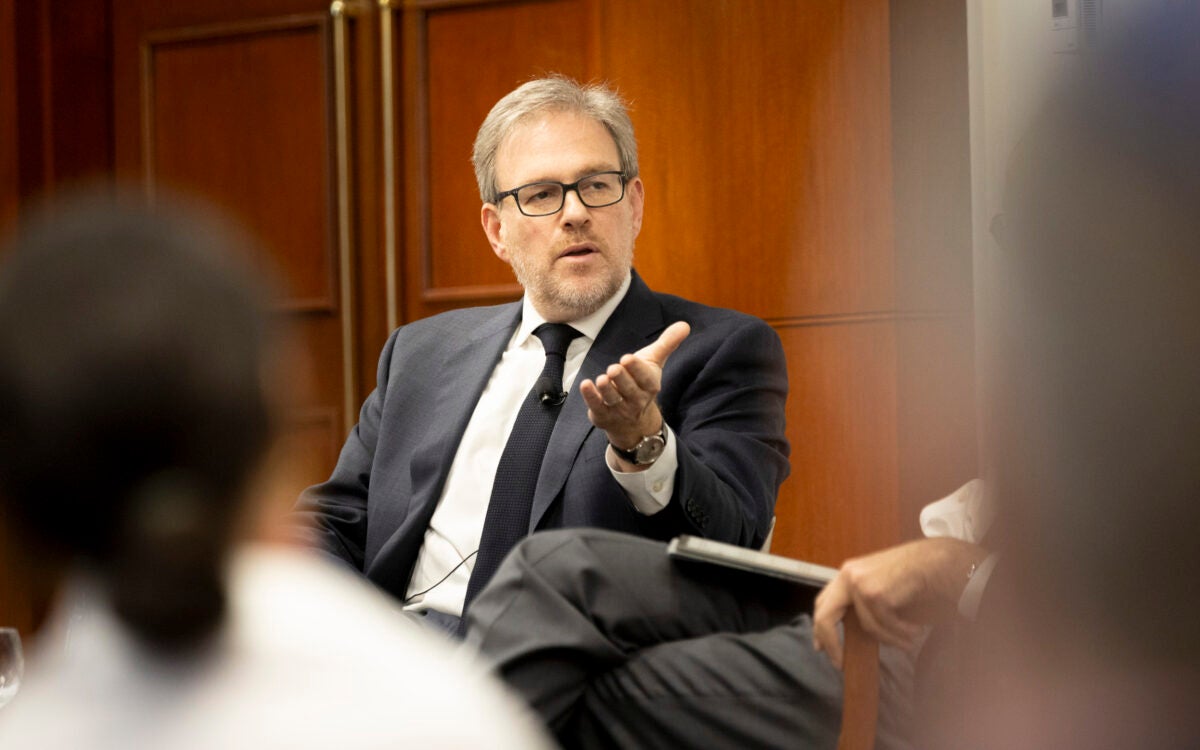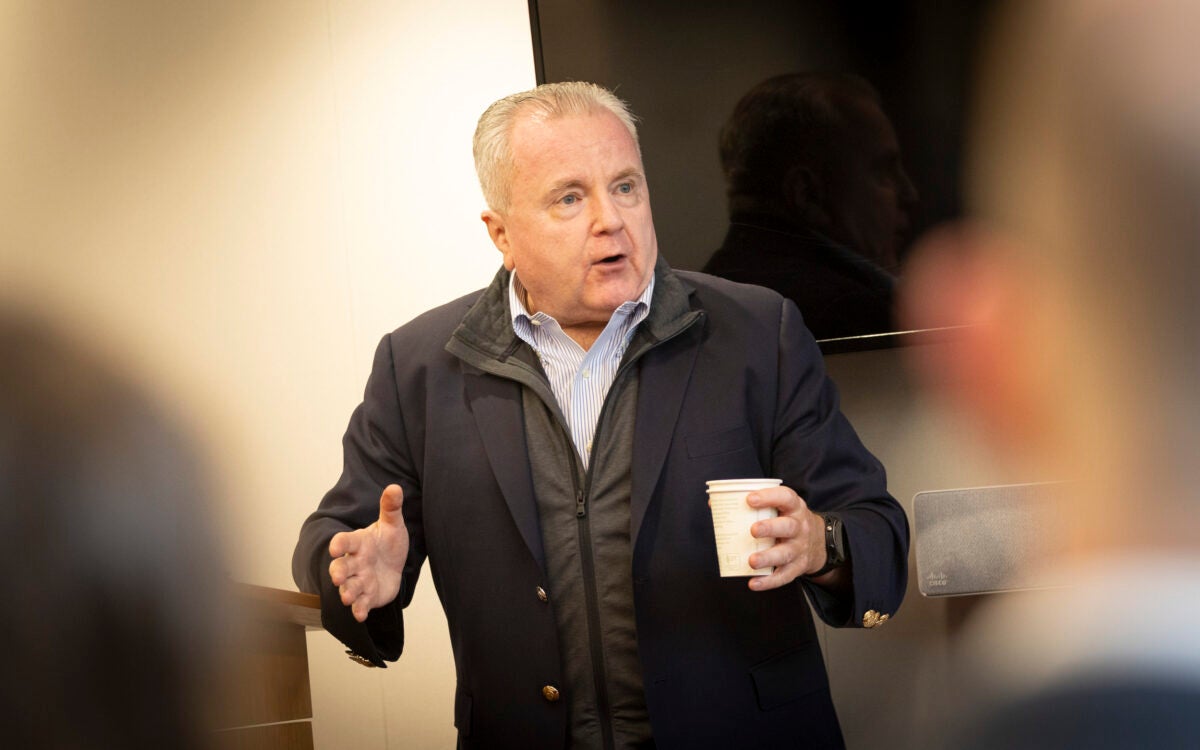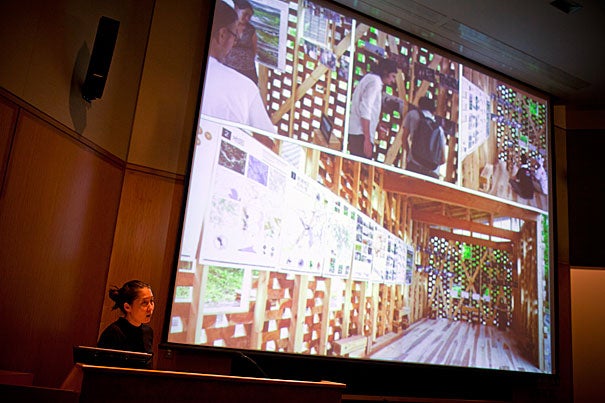
“Few people and even I have a hard time understanding what a 16-meter wall of water is,” said Miho Mazereeuw, a lecturer in landscape architecture at the Harvard Graduate School of Design. Mazereeuw’s group built a pavilion for the community to gather.
Justin Ide/Harvard Staff Photographer
Uncertainty remains factor in Japan
Radiation worries, joblessness, survivor guilt tied to rise in suicides
Uncertainty about the long-term effects of low-level radiation and despair over the bleak employment picture in Japan are contributing to alarming rates of suicide among those affected by the cascading disasters of the March 11 earthquake, tsunami, and meltdown of a nuclear reactor, Harvard experts found on recent visits.
Yusuke Tsugawa, a researcher in general medicine at Harvard-affiliated Beth Israel Deaconess Medical Center and co-director of the Boston-Japan Medical Relief Initiative, said that the raging debate in Japan over health risks of exposure to low-level radiation over time makes it difficult for residents to move on.
“Honestly, there is a huge debate in Japan about the radiation” emitted from the Fukushima Daiichi nuclear reactor, said Tsugawa. “One group of specialists says there is no effect and another group proposes a different opinion. We have to be clear that nobody knows that influence.”
Without ample evidence or an unequivocal research technique to gather it, there is no clear answer to how far away from the Fukushima plant it is safe for people to farm or even live. That uncertainty leads to despair among people who are already dislocated and unemployed.
The Fukushima prefecture saw 68 suicides in May, 19 more than in May 2010, according to a report by the national police agency. Tokyo had 325 suicides in May. Japan already leads the industrial world in suicides, and the northern part of the country where the earthquake and tsunami occurred already had the highest rates in the country. The suicides of people in their 30s have been tied to dim prospects for employment in the disaster zone, while others have taken their lives because of overwhelming survivor guilt and loss.
“I visited a lot of people in temporary housing and talked to a lot of people who lost family,” said Tsugawa, who led a 15-physician team from Boston that provided care to disaster survivors. “Anything we do — have tea with them, talk to them — will be help. But we need to do better.”
While in Japan, Tsugawa’s group helped set up a 10-year medical assessment of a couple of thousand survivors in the region, which will examine the health implications as a result of the earthquake and tsunami. The study is being conducted by the Ministry of Health, Labor and Welfare and the Department of Public Health, Tohoku University Graduate School of Medicine.
The Fukushima prefecture plans a separate study to investigate the impact of low-dose radiation.
“There are disasters going on in the world all the time,” he said. “We are looking for better scientific evidence to address it.”
Tsugawa spoke Friday at the forum: “Recovery and Reconstruction in Japan, Harvard Reports from the Field,” which included a Design School lecturer who coordinated efforts to build a pavilion for the community to gather; and two undergraduates, Jun Shepard ’14, and Glenn Bogardus ’12, who had hands-on summer internships with aid organizations in Japan. The panel was moderated by Andrew Gordon, director of the Reischauer Institute of Japanese Studies, which sponsored the presentations with the Weatherhead Center Program on U.S.-Japan Relations.
The 9.0-earthquake and tsunami in Great Tohoku caused 15,782 deaths, and another 4,806 people are still missing, said Tsugawa. (The 2010 earthquake in Haiti was only 7.0 on the Richter scale but caused 316,000 deaths, with another 869 still missing. A poor health care system in Haiti resulted in many more deaths over time.)
While aid efforts have been significant and effective, the scale of the devastation is mind-boggling.
“Few people and even I have a hard time understanding what a 16-meter wall of water is,” said Miho Mazereeuw, a lecturer in landscape architecture at the Harvard Graduate School of Design. The destruction in some areas was 100 percent.
Mazereeuw, who is completing a book on pre-emptive disaster design that includes case studies from earthquake-prone regions, said that there has been a dramatic shift away from thinking that infrastructure — such as a high seawall — can be engineered to be adequate protection.
“You can’t prevent things by management and engineering,” she said. “People need to know where to evacuate, and it has to be a community-based effort.”
Mazereeuw’s group built a community center where dislocated residents can gather, engaging children and young adults to do the work.
Coming to grips with displacement is challenging enough. The added layer of uncertainty — over the long-term effects of radiation, the safety of food grown in the region, and prospects for agriculture and business — has been devastating. Mazereeuw said that a man involved in aquaculture asked her to do testing related to radiation at his oyster farm. He wanted to know whether he would be able to sell oysters if he rebuilt it.
“It’s a big issue and there needs to be more research to come up with answers that people trust,” Mazereeuw said.
Still, Mazereeuw wanted to emphasize the optimism held by those she encountered. In remarks made following the forum she wrote: “All of the people my students and I met were an inspiration. Yes, they were all aware of the challenges ahead and had many questions about what the future holds, but they were organized and already planning and figuring out ways to rebuild their lives.”
